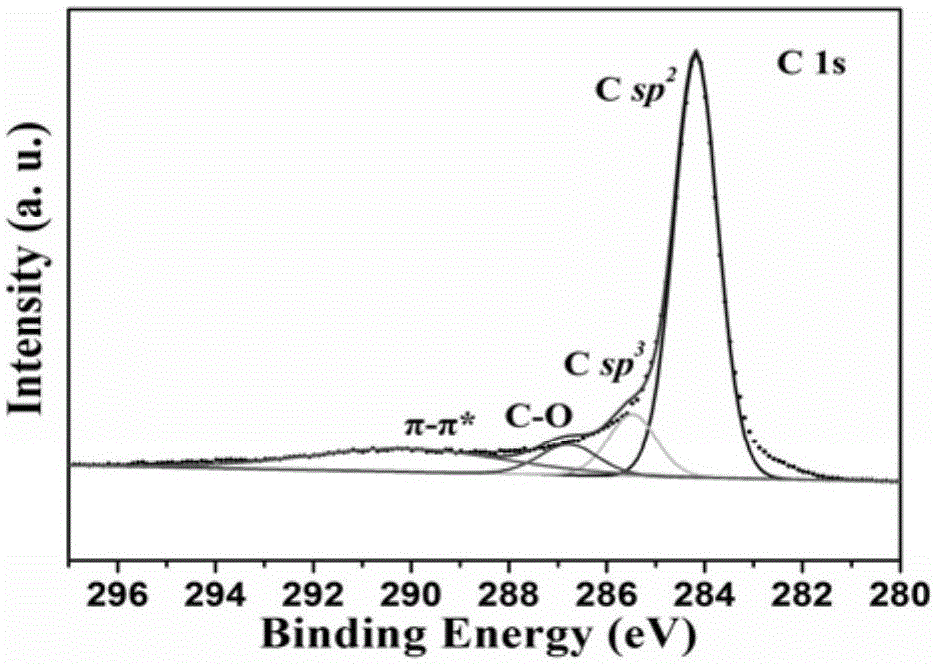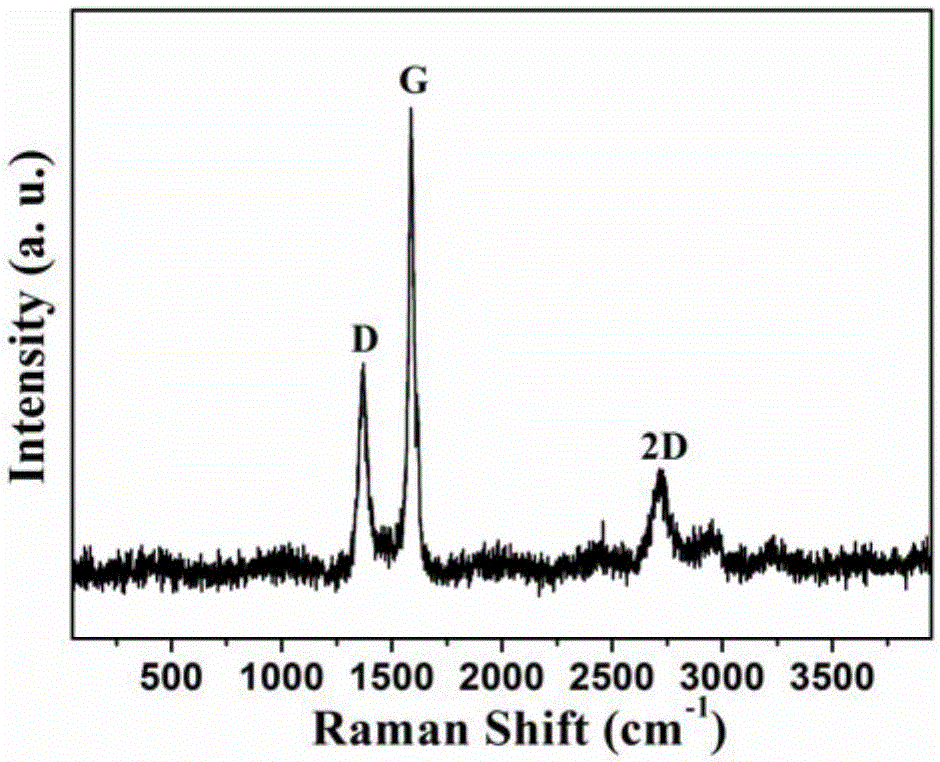Method for preparing graphene from biomass waste
A biomass and graphene technology, applied in the field of graphene preparation, can solve the problems of low graphene output, high equipment requirements, high cost of raw materials, etc., and achieve the effects of reducing pollution, low cost, and improving electrical conductivity
- Summary
- Abstract
- Description
- Claims
- Application Information
AI Technical Summary
Problems solved by technology
Method used
Image
Examples
Embodiment 1
[0066] Embodiment 1: Graphene preparation with rice straw as raw material
[0067] Step 1: Soak 40-80 mesh rice straw in water 8-10 times its mass for 3 days, add slaked lime equivalent to 35% of its mass, stir evenly, then heat to 95-100°C and keep it warm for 3 hours before filtering , to obtain solid residue and yellow viscous liquid.
[0068] In the second step, the solid residue is placed in hydrofluoric acid with a concentration of 25% at a liquid-solid ratio of 3:1, treated at 70°C for 60 minutes, and then the liquid-solid ratio is diluted to 20:1, and treated for 90 minutes under boiling conditions. Filtration to obtain desiliconization hydrolysis slag;
[0069] The third step is to carbonize the desiliconized hydrolysis slag obtained in the second step. Under the protection of nitrogen at a flow rate of 400 sccm, the temperature was raised to 400° C. at a rate of 5° C. / min, and then kept for 2 hours to obtain a carbonized material.
[0070] Step 4: Treat the carbon...
Embodiment 2
[0074] Embodiment 2: Graphene preparation with bamboo product processing waste as raw material
[0075] Step 1: soak 40-80 mesh bamboo product processing waste in water 8-10 times its mass for 3 days, add slaked lime equivalent to 35% of its mass, stir evenly, then heat to 95-100°C and keep it warm After 4h, solid residue and yellow viscous liquid were obtained.
[0076] In the second step, the solid residue is placed in hydrofluoric acid with a concentration of 25% at a liquid-solid ratio of 3:1, treated at 70°C for 60 minutes, and then the liquid-solid ratio is diluted to 20:1, and treated for 150 minutes under boiling conditions. Filtration to obtain desiliconization hydrolysis slag;
[0077] The third step is to carbonize the desiliconized hydrolysis slag obtained in the second step. Under the protection of high-purity hydrogen with a flow rate of 400 sccm, the temperature was raised to 600 °C at a rate of 10 °C / min, and then kept for 4 hours to obtain a carbonized mater...
PUM
| Property | Measurement | Unit |
|---|---|---|
| electron mobility | aaaaa | aaaaa |
| electrical resistivity | aaaaa | aaaaa |
Abstract
Description
Claims
Application Information
 Login to View More
Login to View More - R&D
- Intellectual Property
- Life Sciences
- Materials
- Tech Scout
- Unparalleled Data Quality
- Higher Quality Content
- 60% Fewer Hallucinations
Browse by: Latest US Patents, China's latest patents, Technical Efficacy Thesaurus, Application Domain, Technology Topic, Popular Technical Reports.
© 2025 PatSnap. All rights reserved.Legal|Privacy policy|Modern Slavery Act Transparency Statement|Sitemap|About US| Contact US: help@patsnap.com



